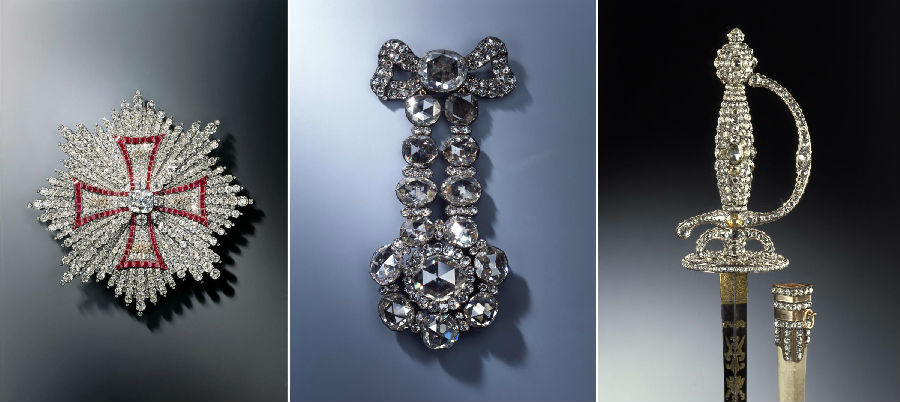Rocketing art prices are attracting evermore daring criminals. On November 13th intruders were walking out of the Dulwich Picture Gallery in London with two Rembrandts when they were stopped by police; they managed to escape, albeit without the paintings. Four men are currently on trial for the theft in 2017 of a giant gold coin valued at 3.75m euros ($4.1m) from the Bode Museum in Berlin.
飛漲的藝術(shù)品價格吸引了越來越多膽大妄為的罪犯。11月13日,闖入者帶著兩幅倫勃朗的畫走出倫敦的達(dá)利奇畫廊時被警察攔住了;盡管畫沒有偷成,他們還是設(shè)法逃走了。四名男子目前因2017年從柏林博德博物館盜走一枚價值375萬歐元(合410萬美元)的巨型金幣而受審。
Even so, the Dresden heist—now being investigated by a 20-strong team of specialists code-named “Epaulette”—stands out. The late Martin Roth, a former director of the Dresden State Art Collections (of which the jewellery hoard is a part), claimed in 2010 that “the Green Vault is secured like Fort Knox”. Roth thought “the human factor” and “insider knowledge” posed the greatest risk, and the Green Vault’s staff will doubtless be questioned closely. On the other hand, points out Julian Radcliffe of the Art Loss Register, an art-database in London, crooks can often pick up ample intelligence as paying visitors.
即便如此,德累斯頓的這起搶劫案仍然引人注目,這起搶劫案目前正由一個代號為“肩章”的20多名專家組成的團(tuán)隊進(jìn)行調(diào)查。已故的德累斯頓國家藝術(shù)收藏館前館長馬丁•羅斯曾在2010年宣稱,“綠穹珍寶館像諾克斯堡一樣安全”。羅斯認(rèn)為“人為因素”和“內(nèi)部信息”構(gòu)成了最大的風(fēng)險,綠穹珍寶館的工作人員無疑會受到嚴(yán)密的質(zhì)疑。另一方面,朱利安·拉德克利夫指出,倫敦的一個藝術(shù)數(shù)據(jù)庫——“藝術(shù)損失記錄”的工作人員,騙子們經(jīng)常可以作為付費(fèi)游客獲取足夠的情報。

The artefacts are as storied as they are valuable. They survived the devastating Allied bombing of Dresden during the second world war, only to be seized by the Soviet Union. They were miraculously returned in their entirety to East Germany, contributing to the city’s resurgence, though the full trove has been on display only since 2006, after the painstaking restoration of Dresden Castle. The fear now is that, since the pieces are too recognisable to be sold intact, the robbers will break out the diamonds and sapphires to flog them separately. The coin stolen from the Bode Museum is widely assumed to have been melted and sold off. The loss of the Dresden jewellery would be much sadder.
這些人工制品不僅有價值,而且很有傳奇色彩。二戰(zhàn)期間,盟軍對德累斯頓進(jìn)行了毀滅性的轟炸,他們幸免于難,但最終被蘇聯(lián)占領(lǐng)。它們被奇跡般地全部歸還給了東德,為這座城市的復(fù)興做出了貢獻(xiàn),盡管全部寶藏直到2006年德累斯頓城堡艱苦修復(fù)后才得以展示。現(xiàn)在的擔(dān)心是,由于這些碎片太容易辨認(rèn)而不能完整地出售,搶劫者會將鉆石和藍(lán)寶石分開出售。人們普遍認(rèn)為,博德博物館被盜的硬幣已經(jīng)被熔化并賣掉了。失去德累斯頓的珠寶會令人更加傷心。












